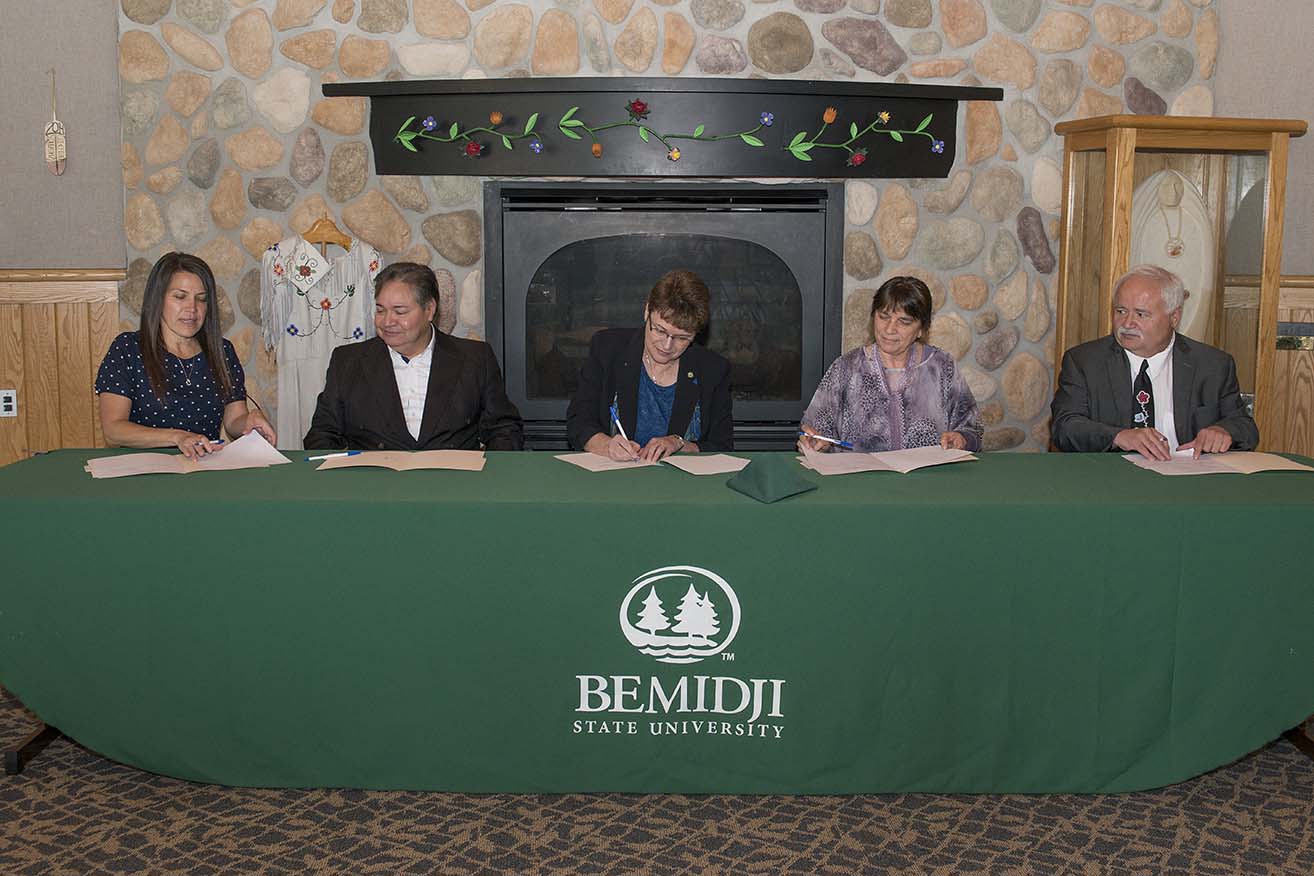
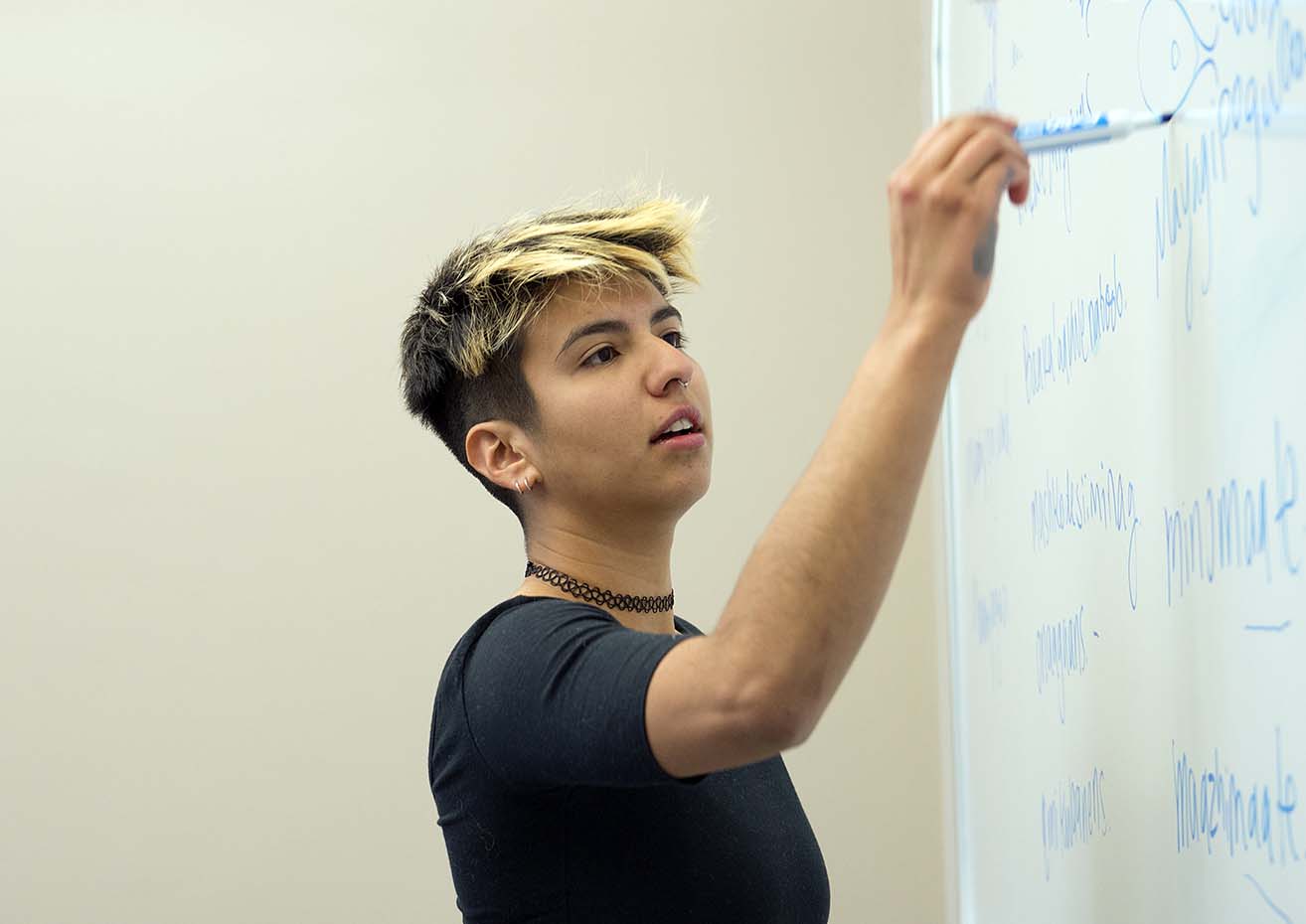
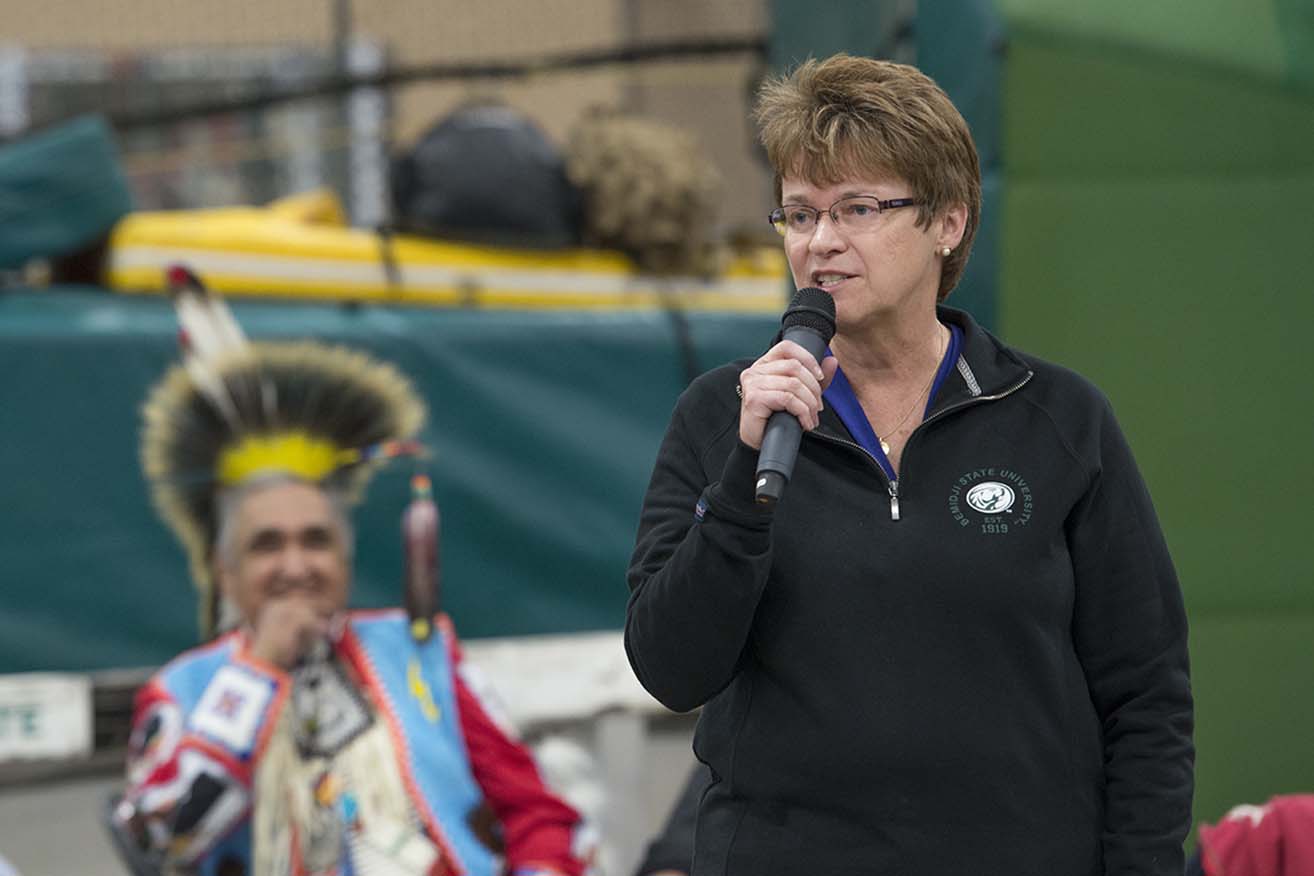
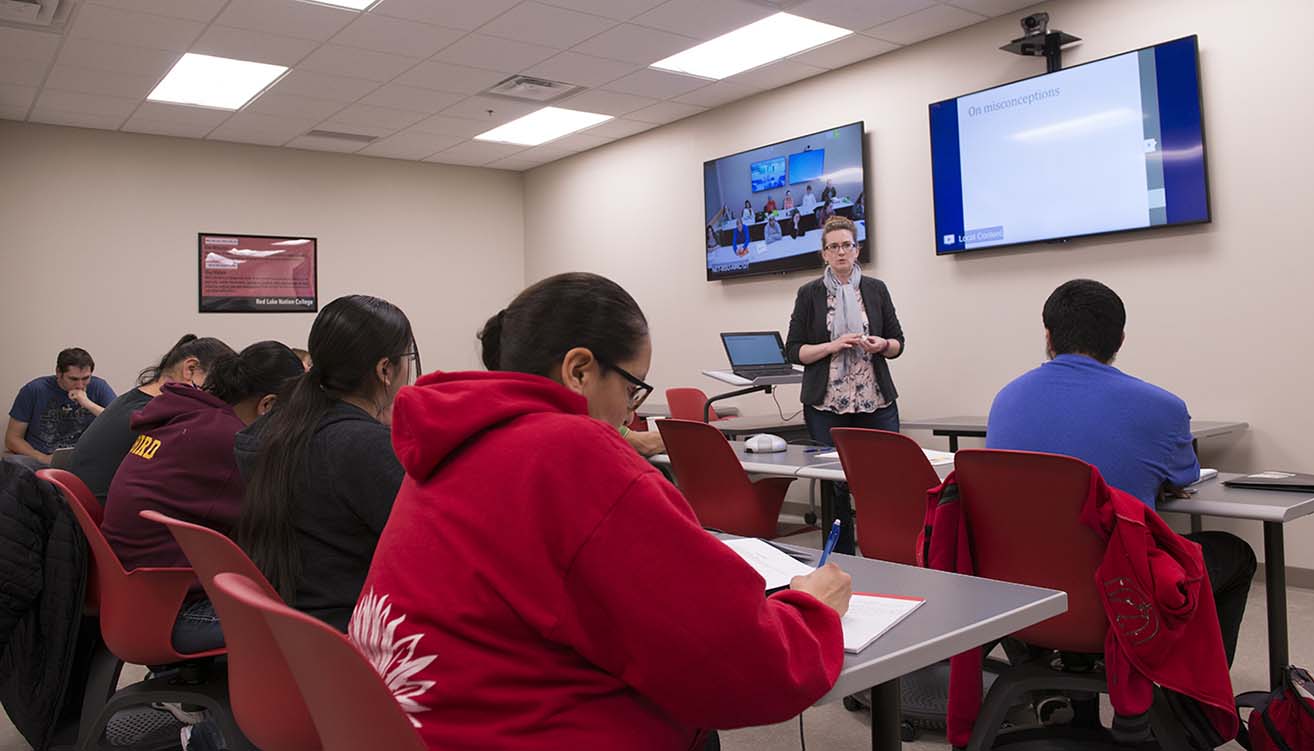
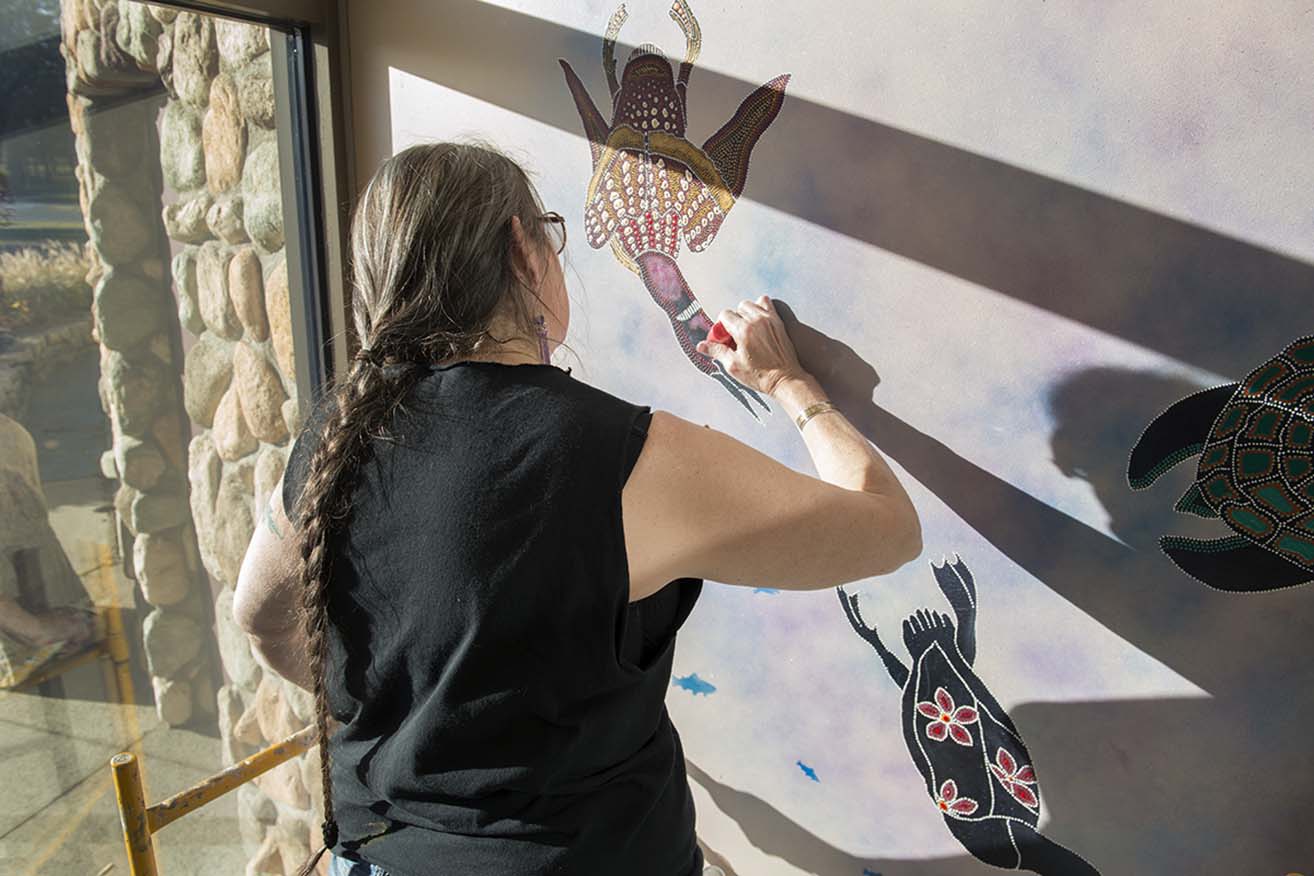
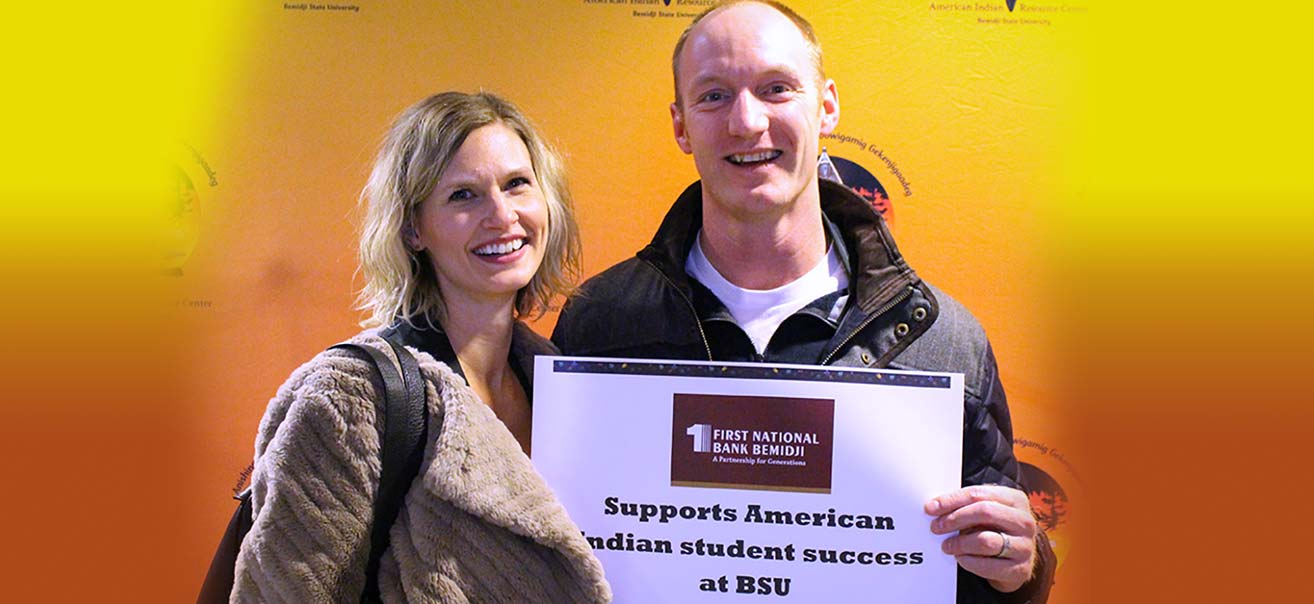
Amid a surging American Indian political movement, Bemidji State University made history in 1969 when it began the nation’s first collegiate Ojibwe language program and matched the University of Minnesota by establishing an Indian studies major.
This May, the university set a new precedent: simultaneous dual-enrollment agreements with four tribal colleges in northern Minnesota. The pacts will establish direct pathways for native students to move from the two-year schools into a four-year degree.
Strengthening BSU as a magnet for American Indian students, language, culture and pride is evolving from an institutional emphasis into a foundational pillar of the university’s mission.
A surge of activity began two years ago with the hiring of Bill Blackwell Jr. as executive director of the university’s American Indian Resource Center. That momentum accelerated after Dr. Faith Hensrud became BSU’s 11th president last July.
“We’re right in the middle of the three largest reservations in Minnesota,” said Blackwell, who previously worked in development and marketing at Leech Lake Tribal College in Cass Lake. “We have access to a lot of things that many schools don’t. We have a history that most schools don’t.”
Blackwell’s relentless drive to innovatively recruit, encourage and graduate Indian students – and his network of relationships across the region – is strongly supported by Hensrud, who had extensive experience with native education in her previous work at the University of Wisconsin-Superior.
Together, and in alliance with Indian and non-Indian faculty, staff and community partners, they have set out to enroll more native students and serve them better, while also building a bridge to tribal colleges and their corresponding tribal nations and members.
One ambitious objective is to increase American Indian enrollment from a current level of about 4 percent to 10 percent in coming years. Beltrami County’s native population is 21 percent, compared with just 1 percent statewide.
“You can never rest on your past successes,” Hensrud said. “We’ve done some really great things, but now we have to start thinking about – as we do with all of our student populations – how do we begin to improve our student retention and graduation rates.”
Blackwell has focused on transforming the American Indian Resource Center (AIRC) into a more active and nurturing hub for native students, and he has been a vocal champion for additional scholarships and other funding to further their success.
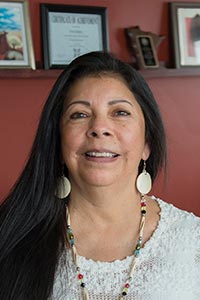
“My hands are up to Bill Blackwell because he actually lives in his job minute by minute,” said Dr. Vivian Delgado, interim assistant dean for BSU’s College of Arts & Sciences and an assistant professor of languages and ethnic studies, teaching Ojibwe. “He’s not just a name and an office. He’s interacting with students and funders, faculty and staff, and recruitment.”
Because of its strategic location, Bemidji State has long been a leader in elevating American Indian studies and seeking to serve Indian students.
To date, BSU has awarded degrees to more than 1,000 American Indian graduates. In recent years, half of the chairmen and chairwomen leading American Indian nations throughout Minnesota were BSU alumni.
Blackwell also noted that the university’s Council of Indian Students last fall presented its 44th annual powwow, meaning the inaugural event was in 1972.
“The (American Indian) Religious Freedom Act came out in 1973, which made it OK for ceremonies to be done and conducted without being arrested,” he said, “and so, to think that in 1972, BSU was putting on its first powwow.
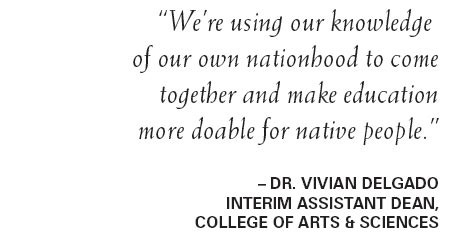 “The university was very progressive with Indian people, very progressive in the way they wanted the university to go. Part of my message to President Hensrud, and she has been very receptive, is that we can be cutting edge again. We can be
“The university was very progressive with Indian people, very progressive in the way they wanted the university to go. Part of my message to President Hensrud, and she has been very receptive, is that we can be cutting edge again. We can be
the college that people look for as American Indian students and say, ‘I want to go there.’”
BSU’s connection to American Indians is increasingly recognized as an essential part of its identity and has emerged as a priority in work now underway on a new university strategic plan beginning in 2018.
“The piece that gets missed by a lot of people is that Bemidji is treaty land,” Blackwell said. “Over the years, it’s morphed into being owned by non-Indians, but this was, at one point in time, a very vibrant Ojibwe village. That’s the basis of who we are.”
He said Hensrud understands the bigger picture — that it isn’t simply about recruiting more American Indian students. It comes down to how Bemidji State understands and positions itself.
“It really is a basis of what the university says to our students,” Blackwell said. “That comes in having more staff who are American Indian, that comes in more initiatives, that comes in having a president – and she has done an amazing job at this – who can really hear what we’re saying.”
Talk has been followed by action, both symbolic and otherwise.
During her first weeks on the job, Hensrud hosted the presidents of the region’s four tribal colleges at a meeting on campus, gifting them with wild rice, sage and tobacco grown at BSU. By fall, she had made on-campus visits to each of the colleges, as well.
Hensrud included a native drum and singing group in her October inauguration and, for the first time ever, in BSU’s commencement ceremony. She also established an American Indian Advisory Board composed of community and regional representatives and followed Delgado’s suggestion to form an on-campus Indigenous Advisory Council.
“A lot of native people on campus have never worked together because we’ve been siloed out,” Delgado said. “This is a good place to bring everybody together.”
Hensrud said the input from both groups is important in determining how BSU can best achieve its goals for Indian enrollment and outreach with sensitivity for the distinct needs and concerns of native nations and people.
The advisory groups are “designed to make us think of ways to work more collaboratively with our tribal communities,” she said, “as well as to think of ways that we can do a better job of recruiting and retaining our American Indian students.”
Blackwell said Bemidji State is seeking to be a respectful advocate for native interests. One of his innovations has been the establishment of Tribal College Preview Days — inviting tribal college students to spend a full day at BSU and introducing them to its various services and departments.
“We’re not where we need to be yet – there are a lot of tribal colleges we need to reach out to – but we’ll get there,” he said. “I’m a big proponent of, you strengthen your inner circle first and then we’ll branch out.”
The university has begun adding Indian-related emphases to its majors, including tribal justice with criminal justice and indigenous nations with marketing.
This spring, Bemidji State began a project to deliver courses directly to American Indian students outside of Bemidji. Dr. Elizabeth Hagensen, associate professor of criminal justice, taught a freshman-level Criminal Justice and Society course to students at BSU and Red Lake Nation College simultaneously.
Utilizing new teleconferencing technology to link the classrooms together, Hagensen taught one day a week in Bemidji and the other day in Red Lake while the other class would observe and take part through interactive television.
The experience also deepened her perspective as a scholar. Hagensen frequently cites historical examples of major criminal justice events as she teaches, and she discovered that Red Lake students would cite different events with which she was unfamiliar.
“It was good for the Red Lake students to be able to explain that back to us, so we got to learn a little bit about a different vantage point for the same piece of time,” she said.
The course served as a pilot for future plans for a six-campus consortium called “Azhoogan,” which means “the Bridge.” The collaboration includes Northwest Technical College in Bemidji and also encompasses BSU’s dual-enrollment agreements with the four tribal colleges. The consortium emerged as part of a teleconferencing network funded by a $500,000 grant from U.S. Department of Agriculture’s Distance Learning and Telemedicine Program.
While further rollout of the long-distance communication technology will make it easier for tribal college students to take BSU courses on their own campuses, Hagensen said it also should make them more familiar with and comfortable at Bemidji State.
“The interactive video isn’t just about trying to deliver the distance-education piece, but it’s actually trying to build that relationship and develop that pathway,” she said.
There are endless possibilities for collaboration. Blackwell has suggested the possibility of delivering the entirety of academic years three and four to tribal colleges through the Azhoogan network, and Hagensen is excited about the potential for BSU students to hear from tribal educators and leaders.
“Using the tools to collaborate, that’s ultimately what the grant was first envisioned to do,” said Lynn Johnson, the university’s director of extended learning.
Delgado said the many mutual benefits of increasing tribal engagement are key.
“It actually takes (education) to the next level, and that’s really what it should be, where everybody is allowed to contribute intellectually,” she said. “That is the future of indigenous studies and indigenous people.”
Learning about another culture will also benefit BSU students who do not have American Indian ancestry, said Dr. Anton Treuer, professor of Ojibwe.
He pointed out that almost all Bemidji State graduates will work with Indian people throughout the course of their careers.
“If they’re going to be working in education, criminal justice, in environmental studies, knowing something about native people will be vital to help them navigate the world they are actually going to land in,” Treuer said. ”So we should be scaling up our native stuff, not just as a niche service to an underrepresented group, but to the benefit of anybody who comes here.”
While preparation continues for expanding Bemidji State’s partnerships with tribal colleges, this fall Treuer will use the interactive video at the AIRC to teach elementary Ojibwe to students at Central Lakes College in Brainerd.
“I think the idea of taking what is distinctive and innovative about Bemidji State – because there are very few other institutions who are doing what we do – and making it available to other places will just accelerate our footprint throughout the system and the region,” he said.
Ultimately, Delgado said, BSU’s objective is to further American Indian education by broadly leveraging the university and its resources to benefit native communities.
“We’re using our knowledge of our own nationhood to come together and make education more doable for native people,” she said. “We don’t see progress for tribes without education. They go hand in hand.”

